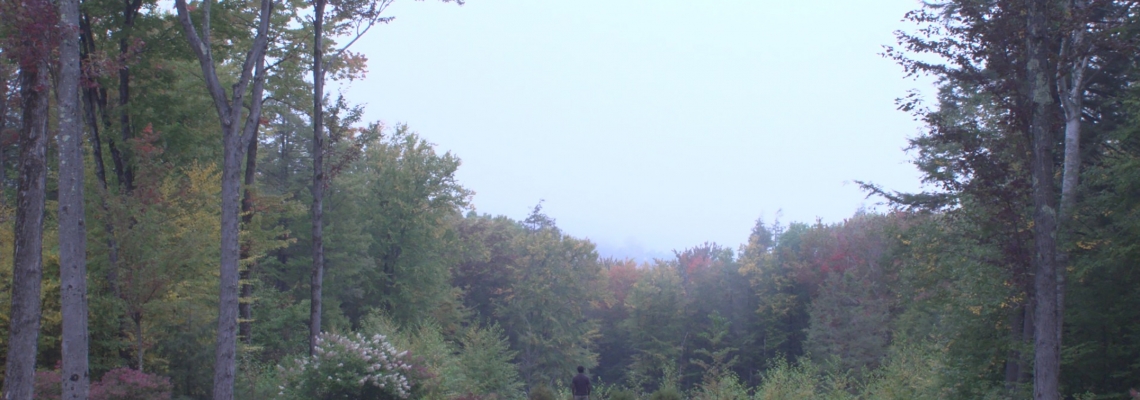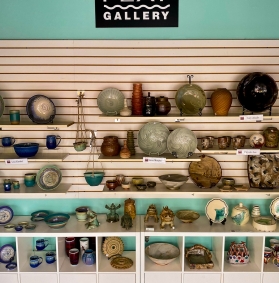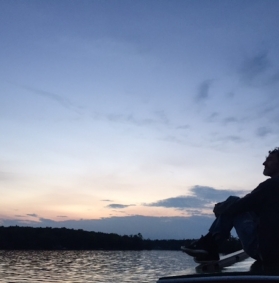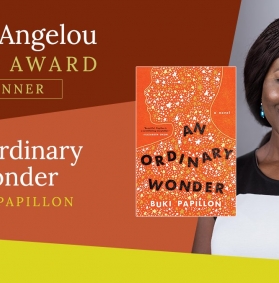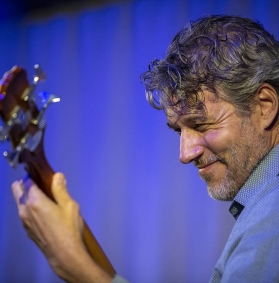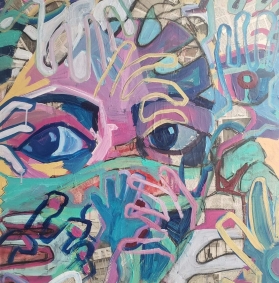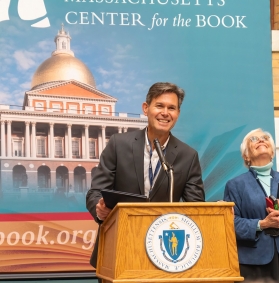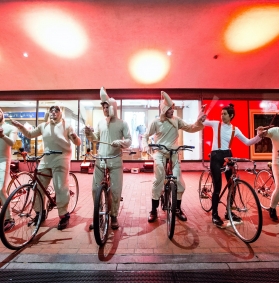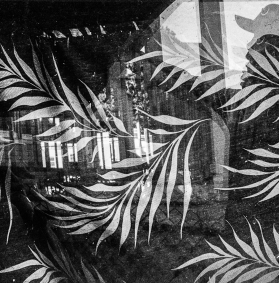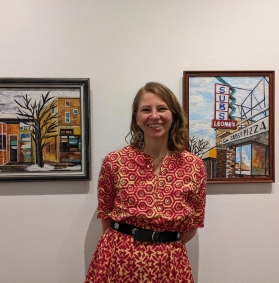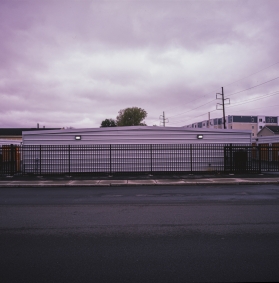Interview with Khary Saeed Jones by Charan Devereaux

Khary Saeed Jones is an award-winning filmmaker and editor. His projects explore the tensions between fiction, memory, and everyday life. As Professor of the Practice in Drama and Film at Tufts University, he teaches storytelling for the screen and advises students developing both scripted and documentary projects. His work has been supported by a Mass Cultural Council Artist Fellowship, Firelight Media's William Greaves Fund, and the Sundance Documentary Fund. He is a 2022-23 fellow of both the Harvard Film Study Center and the Tufts Center for the Humanities. Jones studied at Columbia University (MA, MFA) and Morehouse College (BA).
Jones’s films and collaborations have screened at Sundance, SXSW, MoMA, CIFF, Full Frame, ICA Boston, and many other venues. As a writer-director, his work includes the short films “Hug,” “Three and a Half Thoughts,” “Chrysalis,” and the forthcoming feature-length films Night Fight and Gumbo. Jones has also served on the editorial teams behind the documentary features: Where the Pavement Ends (PBS WORLD/America ReFramed), Black Memorabilia (PBS/Independent Lens), Lorraine Hansberry: Sighted Eyes/Feeling Heart (PBS/American Masters), He Named Me Malala (Fox Searchlight, 2015), Sembene! (Kino Lorber), and The World According to Dick Cheney (Showtime).
Can you talk about what drew you to film or how you became interested in film? Do you remember when you first knew you wanted to be a filmmaker?
If I am being honest, I can’t remember a time when I didn’t know I wanted to be a filmmaker. But going back to 5th or 6th grade, I had an intensifying sense that this is where I was headed. Not that I knew how to get there -- it was a different time. My aunt had a Betamax video camera and that was the only access to any kind of video or film I knew of. There were a few years when I would look forward to family reunions where my aunt would bring her video camera and I would take it and start filming the event.
an intensifying sense that this is where I was headed. Not that I knew how to get there -- it was a different time. My aunt had a Betamax video camera and that was the only access to any kind of video or film I knew of. There were a few years when I would look forward to family reunions where my aunt would bring her video camera and I would take it and start filming the event.
Early on, I was watching movies and anything I could get my hands on about the process of making movies. I remember being drawn to that subject: how things got to be what they were. Along with my curiosity about documenting my family reunions, we had a kids’ microphone – so, no images, only audio – and I remember going around the house and recording conversations with my family members. To roam and use a camera or microphone as a conduit to forge relationships, there was a feedback loop of pleasure and curiosity, whether I knew or not what the outcome of that would be.
When I am teaching, I talk about the line between reality – or what we perceive as reality – and what we imagine. My early experiences created a baseline demand for wanting to be close to what people were really thinking or feeling at any given time. As I got further along in the process of learning how to make art and working on films in different capacities, that curiosity, that baseline interest in getting to what people were really thinking and feeling, persisted. I became very aware that there are ways to use the camera and microphone to get close to those truths. But I also had an imagination. What could my imagination do to open the door, to access what was motivating folks, and communicate that? So there are things I record in real-time, in a documentary way, and things I try to recreate to present a certain kind of truth, of how I see the world and human beings.
Are there filmmakers who were particularly influential in terms of your own work? Do you/did you have mentors?
There were some. You think about what is on YouTube today, showing the behind-the-scenes process of movie-making, from the biggest budget films, to independents, to kids filming behind-the-scenes on their own projects. That did not exist when I was a kid. There was a show called “Standby…Lights! Camera! Action!” that Leonard Nimoy hosted. I have a memory of two or three episodes about special effects, demystifying the process, showing that there is a factory of people working in concert to create images and a certain type of reality that we can disappear into. When I saw the Cohen brothers’ Raising Arizona, I was very conscious that someone made this. I wondered; how did it get to be this way? Their visual style, the way they use actors, the way their stories are conceived … there was an intuitive sense that this was handmade. Someone put this together, another human being. It opened my eyes. There are artists who make these things.
In my middle school years, there was the early work of Spike Lee, releases of Do the Right Thing, School Daze, Mo’ Better Blues, and Malcolm X. Later on, I got very interested in [John] Cassavetes and [Luis] Buñuel. I always had documentary leanings, but it was never enough for me to see the thing that was in front of me. I explored Buñuel’s more narrative, later work. Cassavetes becomes important as I become increasingly aware that the big budget projects might never fall within reach or speak to me in the way I wanted them to. He could grab actors and friends and let things come alive. The edit room was the place to write and rewrite the best parts, the most truthful parts that were captured. That became important to me.
I become increasingly aware that the big budget projects might never fall within reach or speak to me in the way I wanted them to. He could grab actors and friends and let things come alive. The edit room was the place to write and rewrite the best parts, the most truthful parts that were captured. That became important to me.
How would you describe what you do now?
After a number of years working as an editor on more conventional films, just before the pandemic I had the opportunity to work as an editor and writer on a somewhat experimental documentary with director Jane Gillooly, who is an extraordinary filmmaker, and also a Somerville resident. Her film Where the Pavement Ends was very important in getting me back to thinking about the work of directing on the similarly sized handmade films I wanted to return to, that work seemed within reach.
The work I am doing now is at the intersection of fiction and nonfiction, heavily scripted, but using documentary as a foundation for bridging the gap between how we understand the present, the past, and the future. My current film is a hybrid documentary, Night Fight, that comes out of my own personal experience. It conjures very real parts of my personal history but also parts that are fictional. Because of the way the pandemic intervened, this film is a pre-history, a speculative work, a response to a fully fictional film, [Gumbo], that I had been developing and was bringing to production in late 2019/2020. There is a reality that is documented in Night Fight that was on my mind when I was speculating about New England and the United States in the 2070’s and 2080’s, 60 years from today. My hope is to be working quite porously, to blur the line between fiction and nonfiction and to be able to draw on heavily researched material to undergird parts that an audience would recognize as fully invented.
that comes out of my own personal experience. It conjures very real parts of my personal history but also parts that are fictional. Because of the way the pandemic intervened, this film is a pre-history, a speculative work, a response to a fully fictional film, [Gumbo], that I had been developing and was bringing to production in late 2019/2020. There is a reality that is documented in Night Fight that was on my mind when I was speculating about New England and the United States in the 2070’s and 2080’s, 60 years from today. My hope is to be working quite porously, to blur the line between fiction and nonfiction and to be able to draw on heavily researched material to undergird parts that an audience would recognize as fully invented.
I read that Night Fight is based on an experience you had five years ago being followed by a racist vigilante down back roads in rural Ontario.
The film is interested in that experience and why it happened, and the limits of understanding why things like that happen. In the course of making the film and constructing the film, I have oscillated between my own personal experience and the experiences of other African Americans, things that happen on a spectrum, from microaggressions as young children to near-death experiences.
Both of these films, [Night Fight and Gumbo], are in dialogue with one another. I did not know that the film that has become Night Fight… I did not know I was making this film initially. I discovered that I had been making it in various forms long before the pandemic started, collecting and shooting material. I unearthed an artistic practice that was its own kind of response to my experiences, in addition to the more formal, narrative response of making a film. A through-line between the incident itself and an unthinking response. A reclaiming of the material.
Do you have any routines or practices that support your process?
There are two tentpoles of my own practice. One is a reliance on the editorial process. While there is a lot that can be scripted, outlined, preconceived, or previsualized, there is also an expectation that the real film can only be unearthed or discovered by going through what was captured. Only through that meticulous mapping of what happened when the camera was rolling or the sound recorder was recording can I discover what I am doing. Deferring to a planning process is helpful to some extent, it keeps you on budget, but in some way, it is just an idea. You can’t let that idea reign over what actually happened.
The other tentpole is a kind of collecting. When I work with my students, I talk about collecting fragments. This is not dissimilar to what other artists and writers do, gathering elements, whether they are generated from within, or things collected – sounds, video, or still images. Those elements in my notebooks become the raw material of future work. Whether I know if they belong or not, I never let what I am experiencing, thinking, and feeling just be left to memory.
You spoke about working with students. How long have you been teaching?
I have been at Tufts University for nearly ten years. Many years ago, I taught at Clarke University in Worcester for a year while I was finishing up film school. Teaching forces you to reflect in a formal way on how you approach your work, how you make it, and what elements are teachable – and what elements are not. I communicate to students that they need to have an openness to searching for their own process. In all my classes, and in all my relationships to students, what I try to make central is the need to be curious about how they come by their creativity, how their creative engine works, the kinds of exercises and work we need to do to excavate our feelings and beliefs, and translate that in some rigorous fashion so that an audience or spectator can detect a piece of our intention.
What brought you to Somerville? Do you have favorite places in the city?
Kendra and I moved to Somerville to take jobs at Tufts University in 2014. [Kendra Taira Field is associate professor of history and director of the Center for the Study of Race and Democracy at Tufts.]
I spend a lot of time in coffee shops. Everywhere I’ve lived, even going back to college, I’ve spent time in so-called third spaces – those places have always been important to me, places like Diesel Café in Davis Square. There are also places in Union Square. Tufts has also been a major anchor for me and for my family.
What most nurtures your creative or filmmaking life? What do you do when you are not working on film projects?
A lot of my present day is warped by the pandemic – I always feel like I’m catching up. We also had a baby during the pandemic, so I’m just now finding my way back to nurturing myself! What nurtures me now is spending time people-watching, having walking-around time. I could say other things like cooking and watching movies and trying to keep up the habit of discovering old and new work, but that would not be the right answer. I try to stay close to what people are living, their day-to-day lives, and see them in their element.
Artist info:
Website: www.kharyjones.com
Instagram: @khary.jones
Night Fight:nightfightfilm.com
